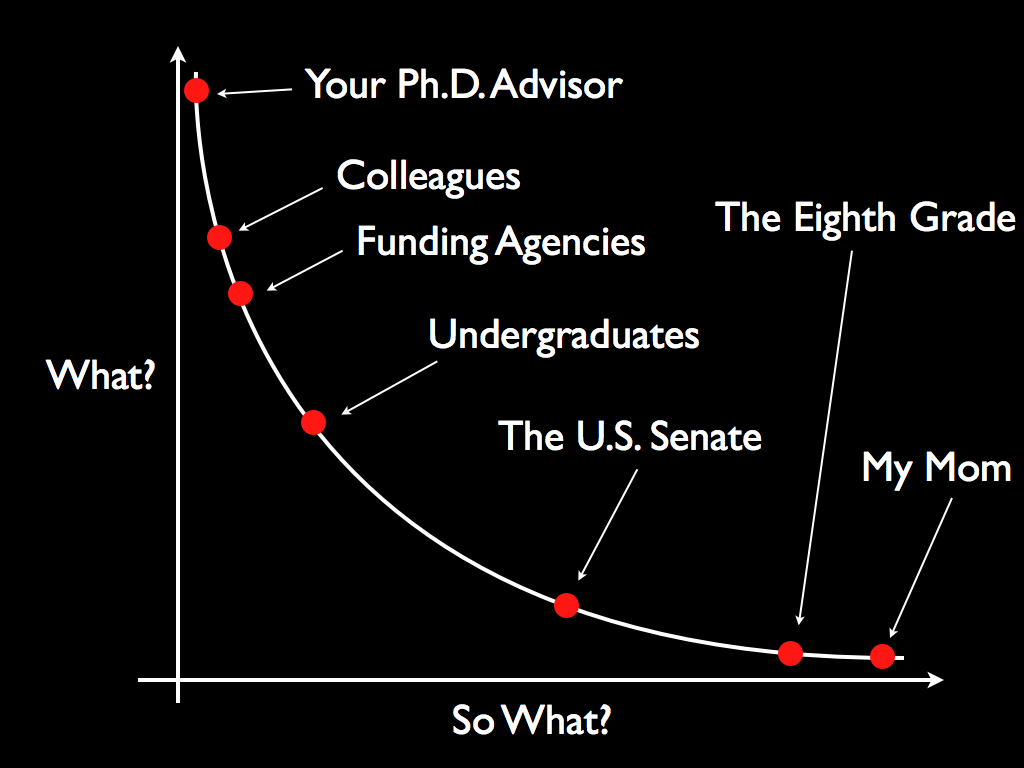DESCRIPTION
This seminar on technical communication and presentations was prepared and given by Tim Miller of SpokenScience.com. This seminar provides the fundamentals in sharing science as Miller explains how to choose the very best tools to do the job of communication and shares some of the tips and tricks that can help you take your scientific presentations to the next level. Miller led this particular version at Duke University in the summer of 2010.
DESCRIPTION
This seminar on technical communication and presentations was prepared and given by Tim Miller of SpokenScience.com. This seminar provides the fundamentals in sharing science as Miller explains how to choose the very best tools to do the job of communication and shares some of the tips and tricks that can help you take your scientific presentations to the next level. Miller led this particular version at Duke University in the summer of 2010.
TRAINING VIDEOS
OBJECTIVES
LEARNING GOALS
Understanding your audience is essential to creating effective presentations.
Practicing your presentation is important for effective delivery.
A presentation can be powerful and effective with minimal use of slides.
Telling a story increases the effectiveness of research presentations.
Common practice in communication is not always best practice.
Outreach activities, like engaging with public audiences, are ways to improve communication skills.
NANO CONTENT MAP
Nanometer-sized things are very small, and often behave differently than larger things do.
Scientists and engineers have formed the interdisciplinary field of nanotechnology by investigating properties and manipulating matter at the nanoscale.
Nanoscience, nanotechnology, and nanoengineering lead to new knowledge and innovations that weren't possible before.
Nanotechnologies—and their costs, utility, risks, and benefits—are closely interconnected with society and with our values.
DOWNLOAD FILES
Credits
Museum of Life and Science
Developed for the NISE Network with funding from the National Science Foundation under Award Numbers 0532536 and 0940143. Any opinions, findings, and conclusions or recommendations expressed in this product are those of the authors and do not necessarily reflect the views of the Foundation.
Creative Commons Attribution Non-Commercial Share Alike 3.0 United States (CC BY-NC-SA 3.0 US).
View more details

NISE Network products are developed through an iterative collaborative process that includes scientific review, peer review, and visitor evaluation in accordance with an inclusive audiences approach. Products are designed to be easily edited and adapted for different audiences under a Creative Commons Attribution Non-Commercial Share Alike license. To learn more, visit our Development Process page.

